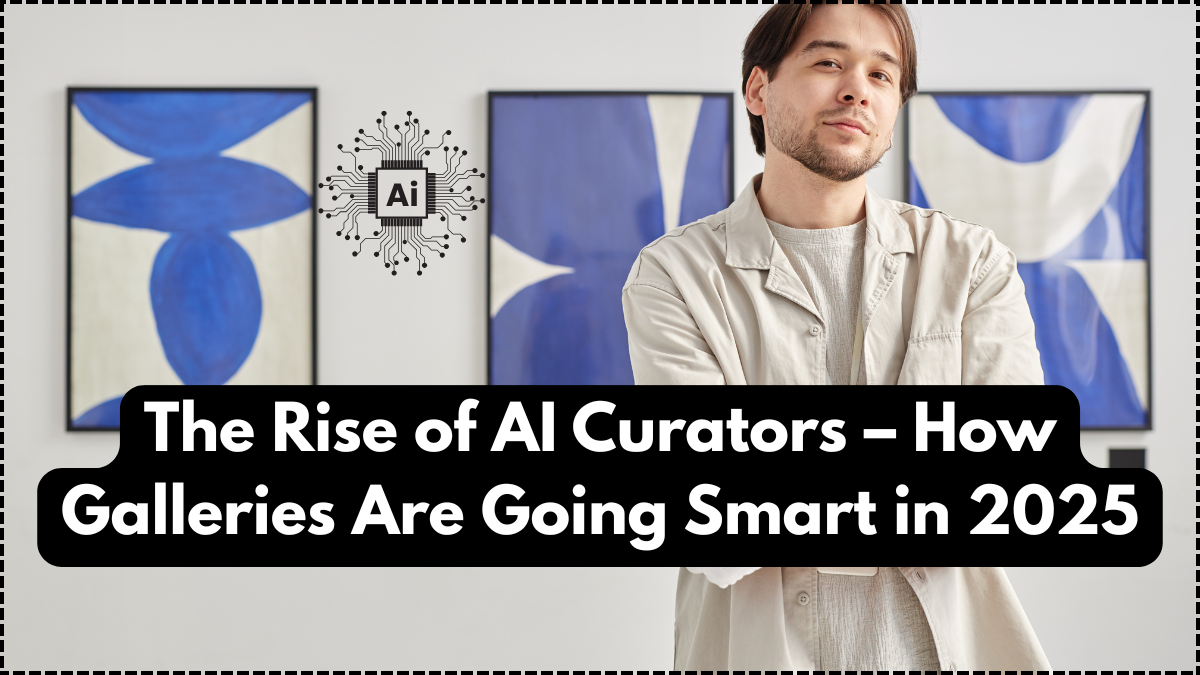The art world is stepping into a future where technology and creativity merge like never before. In 2025, AI curators in galleries are becoming a reality, changing how art is selected, displayed, and experienced by audiences. Rather than replacing human curators, artificial intelligence is working alongside them, offering data-driven insights and advanced smart exhibition tools that elevate gallery experiences to a whole new level.

Why Galleries Are Turning to AI Curators
Curating an art exhibition is a complex task. It requires deep knowledge of art history, cultural context, and visitor engagement. Now, AI curators in galleries are helping by analyzing massive amounts of data—like visitor behavior, trending art styles, and historical archives—to recommend which works should be displayed and how. With smart exhibition tools, galleries can create exhibits that feel more dynamic, inclusive, and personalized for every visitor.
How Smart Exhibition Tools Are Used
The term smart exhibition tools covers a wide range of technologies that power AI curators in galleries. These tools use machine learning and advanced analytics to optimize every aspect of an exhibition:
-
Artwork selection based on cultural relevance and visitor interests
-
Layout optimization for the best flow and viewing experience
-
Interactive displays that respond to visitor input
-
Real-time analytics to see which pieces attract the most attention
Table of Smart Exhibition Tools and Their Roles
Here’s a quick breakdown of how various smart exhibition tools support AI curators in galleries:
Tool/Technology |
Function in Galleries |
|---|---|
AI-Powered Databases |
Suggest artworks based on trends and data |
Virtual Layout Planners |
Design floor plans and optimize space |
Interactive Kiosks |
Provide visitor information and engagement |
Real-Time Analytics AI |
Tracks visitor interest and adjusts displays |
The Impact on Art and Audience Experience
The rise of AI curators in galleries is not just about technology—it’s about transforming the visitor experience. Exhibits curated with AI insights often feel more connected to what audiences want to see, while still honoring artistic integrity. Smart exhibition tools also allow for more accessibility, with multilingual guides, AR experiences, and personalized tours that make art more engaging for diverse audiences.
Conclusion
In 2025, AI curators in galleries are proving that technology can enhance the art world rather than disrupt it. By using smart exhibition tools, galleries are creating smarter, more interactive, and more inclusive exhibits. This is the future of curation—where human creativity and artificial intelligence work hand in hand to bring art closer to everyone.
FAQs
What are AI curators in galleries?
AI curators in galleries are AI systems that assist human curators by analyzing data and helping select and organize artworks.
How do smart exhibition tools help galleries?
Smart exhibition tools provide layout planning, interactive experiences, and analytics to improve how exhibits are created and experienced.
Do AI curators replace human curators?
No—they assist by offering insights and tools, but the final vision still relies on human expertise.
What technologies are included in smart exhibition tools?
They include AI-powered databases, interactive kiosks, virtual planners, and real-time analytics systems.
Why are AI curators becoming important in 2025?
With growing collections and diverse audiences, AI curators in galleries help create more engaging and efficient exhibitions.
Click here to learn more